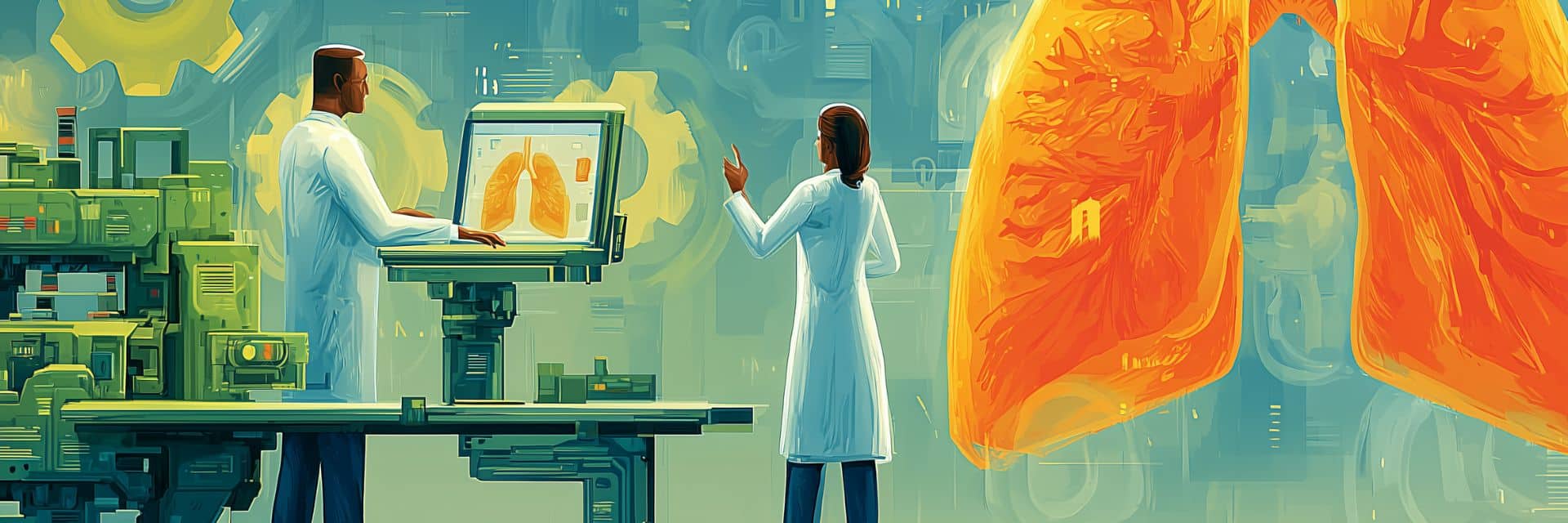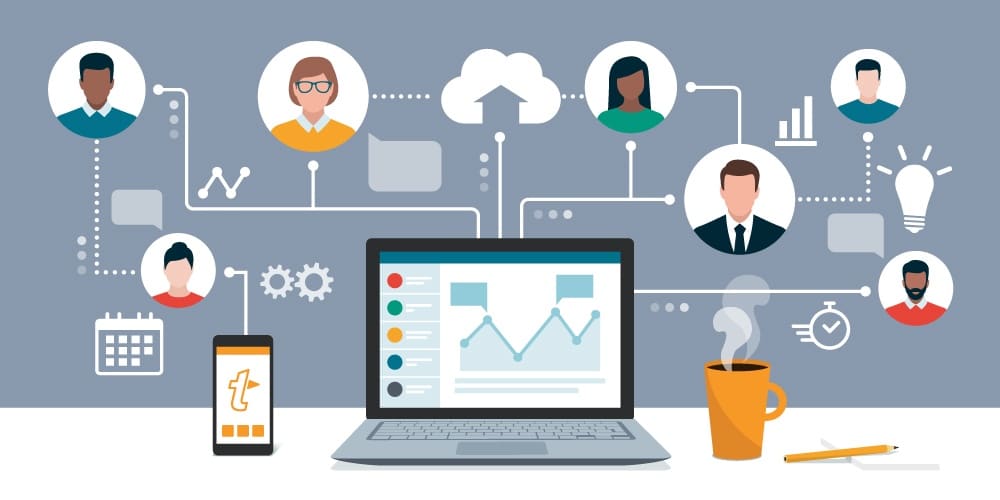Automation in healthcare means using technology to handle the repetitive, manual tasks that consume valuable time, so your teams can focus on what matters most: Patient care. From clinical documentation to patient support, automation streamlines workflows, reduces administrative weight, and ensures consistency across your organization. It gives your physicians, support staff, and administrators the leverage to work more effectively.
What are the key benefits of automation in the healthcare industry?
For healthcare leaders, the goal is to improve patient outcomes while maintaining a healthy bottom line. Implementing automated systems is a direct path to achieving that balance. It addresses some of the industry’s most persistent challenges, from professional burnout to operational costs.
How can automation reduce administrative burden and clinician burnout?
Clinician burnout is a critical issue, and a major cause is the overwhelming administrative workload. According to a study in the Annals of Family Medicine, primary care physicians can spend more than half of their workday on electronic health records (EHR) and desk work, often taking hours of documentation home. This is unsustainable. Automation directly counters this by taking on the repetitive tasks. For example, instead of typing the same notes, referral letters, or patient instructions repeatedly, clinicians can use a simple TextExpander shortcut to insert standardized, pre-approved text. This action saves minutes on each task, which quickly adds up to hours of reclaimed time each week. Reducing this documentation burden allows clinicians to focus on direct patient care, improving their job satisfaction and mitigating burnout.
How does automation improve patient communication and satisfaction?
Your patients expect fast and accurate answers, whether they are asking about an appointment, a bill, or their care plan. When they contact your support center, consistency is key. Automation ensures every agent provides the same vetted, accurate information every time. As research published by the Catholic Health Association shows, effective and clear communication is a key driver of patient satisfaction. This standardization is crucial for improving patient trust and key performance indicators like patient satisfaction and First Contact Resolution (FCR). When communication is clear and consistent, it reduces patient anxiety, prevents misunderstandings, and shows your organization is reliable and professional.
How can automated systems in healthcare lower operational costs?
Improving efficiency with automation has a direct, positive impact on your budget. When clinicians and administrative staff spend less time on repetitive data entry, their productivity increases. For support teams, automating common responses reduces the Average Handle Time (AHT) for calls and messages, which directly contributes to lower operational costs by optimizing agent time. In clinical settings, streamlined documentation workflows help accelerate revenue cycle management (RCM) by ensuring notes and codes are completed promptly and accurately. By reducing errors and saving time, automation cuts waste and allows you to reallocate resources to high-value activities that improve patient care.
What are some practical examples of automation in healthcare?
Automation moves from a concept to a practical tool when you see how it applies to your team’s daily work. The right automated systems do not require complex overhauls but instead work within your existing platforms to simplify specific, recurring tasks.
How can support teams use automation for patient inquiries?
Your patient support team answers similar questions all day, every day. Automation gives them a tool to provide approved, consistent answers in seconds, improving both FCR and AHT. Instead of retyping the same information, agents can use a simple shortcut.
For example, a common billing question can be answered with a Snippet.
- Snippet Shortcut:
xbill.q - Expanded Text: Thank you for your question about your bill. You can view your statement and make a payment online through our secure patient portal here: [Link to Portal]. For specific questions about charges, our billing department is available at (555) 123-4567 from 8 AM to 5 PM, Monday through Friday.
What are some automated healthcare solutions for clinical documentation?
Clinicians spend hours in the EHR writing and updating notes. Automated text expansion tools can make this process faster and more structured. Templates for common notes ensure completeness and consistency while saving significant time.
A SOAP note, for instance, can be generated from a short command.
- Snippet Shortcut:
.ssoap - Expanded Text:
Subjective: [Patient’s subjective report]
Objective: [Objective findings and observations]
Assessment: [Your assessment of the patient’s condition]
Plan: [Your plan for treatment and follow-up]
How does automation help with revenue cycle management?
Accuracy is critical for an efficient revenue cycle management (RCM) process. Simple errors in documentation or coding can lead to denied claims and delayed payments. Automation helps by standardizing the information required for prior authorizations and billing.
A snippet can create a perfect prior authorization request every time.
- Snippet Shortcut:
xauth.req - Expanded Text:
Prior Authorization Request
Patient Name: [Patient Name]
Date of Birth: [DOB]
Insurance ID: [Insurance ID]
Service Requested: [Service/Procedure Name]
CPT Code: [CPT Code]
Diagnosis Code (ICD-10): [ICD-10 Code]
Reason for Request: Medically necessary for the diagnosis and treatment of [Condition].
How does TextExpander provide a secure and compliant automation solution?
When you adopt any new tool in a healthcare setting, the first questions are always about security and compliance. Your technology must protect patient data and fit seamlessly within your existing framework. TextExpander is designed to meet these requirements, giving your IT leadership peace of mind.
How does TextExpander help your organization maintain HIPAA compliance?
Maintaining HIPAA compliance is non-negotiable, and any software that touches patient communication must support that goal. TextExpander is built for healthcare environments by ensuring that sensitive data remains secure.
Furthermore, TextExpander helps reduce the risk of human error that can lead to a HIPAA violation. By creating pre-approved Snippets for patient communications, you control the exact language your teams use. This prevents employees from accidentally sharing sensitive details or providing inaccurate medical information, creating a more secure and standardized communication environment.
What makes TextExpander an easy-to-deploy tool for healthcare IT?
Your IT team needs solutions that solve problems without creating new ones. TextExpander is a lightweight application that is simple to deploy and manage across an entire organization. Because it works on Mac, Windows, and Chrome, it functions on the systems your team already uses. It integrates into nearly any program where you can type, including your EHR, billing software, and email clients, with no complex setup.
Management is centralized, allowing leaders to share and update snippet groups for different departments. If a protocol or phone number changes, you can update the snippet once and deploy it to the entire team instantly. This combination of cross-platform functionality and central control provides a low Total Cost of Ownership (TCO) and makes it a powerful, hassle-free tool for your organization.
What are other types of healthcare automation technology?
While TextExpander provides a foundational layer of communication automation, it is part of a broader ecosystem of tools that help healthcare organizations improve their workflows.
Robotic Process Automation (RPA)
Robotic Process Automation uses software “bots” to automate structured, rules-based administrative tasks. Think of it as a digital workforce that can handle high-volume jobs like data entry, claims processing, appointment scheduling, and managing patient records. RPA excels at connecting legacy systems that don’t have modern APIs, allowing data to move between your EHR, billing software, and patient portals without manual intervention.
This technology is ideal for back-office and revenue cycle operations. Well-known RPA providers include UiPath, Automation Anywhere, and Blue Prism. These platforms allow organizations to build and deploy software bots to mimic human actions, reducing errors and freeing up staff to handle more complex, patient-facing responsibilities.
AI-Powered Medical Scribing
AI scribes are designed to directly combat documentation burnout by listening to and transcribing natural patient-clinician conversations into structured clinical notes. These tools use ambient AI technology to capture the dialogue during an exam, identify medically relevant information, and format it correctly within the EHR. This allows clinicians to focus entirely on the patient instead of a computer screen.
Several innovative companies lead this space. Nuance DAX (Dragon Ambient eXperience) is a prominent solution that integrates with EHRs to automate note creation. Other key players include Abridge and Suki, which offer similar AI-powered voice assistants and scribing tools to reduce the administrative load on physicians.
Clinical Decision Support (CDS) Systems
Clinical Decision Support systems are tools that provide clinicians with evidence-based knowledge and patient-specific information at the point of care. These systems are often integrated directly into the EHR workflow to deliver timely alerts, reminders, and clinical guidelines. For example, a CDS tool might flag a potential drug interaction, suggest an appropriate diagnostic test, or provide a checklist for a specific condition, helping to improve patient safety and care quality.
Most major EHR vendors, like Epic and Cerner, have robust, built-in CDS capabilities. There are also specialized third-party tools, such as VisualDx, which helps with differential diagnosis by providing a database of medical images, and UpToDate, which offers evidence-based clinical resources directly within the workflow.
What is the future of automation in healthcare?
As the healthcare industry continues to evolve, the role of automation will only grow. The drive for greater efficiency, better patient outcomes, and more sustainable workloads for staff will make these tools a standard part of modern healthcare operations. The focus will be on practical solutions that deliver immediate value.
How will automation continue to shape value-based care?
The transition to Value-Based Care (VBC) models depends on two things: Quality outcomes and accurate data. Automation is essential for both. By ensuring that clinical documentation is consistent and complete, automated tools help produce the high-quality data needed for accurate reporting and reimbursement. More importantly, by improving the clarity and consistency of patient communication, automation helps patients engage with their care plans. Better engagement and education lead directly to better health outcomes, which is the ultimate goal of any VBC model.
What role will tools like TextExpander play in the future of healthcare workflows?
In an increasingly complex technology landscape, simple and effective tools will become more critical, not less. The future of healthcare is not about adding more complicated systems but about making existing ones work better together. TextExpander acts as a foundational layer that enhances every other application your team uses. It ensures that the communication happening within your EHR, your patient portal, and your billing software is fast, accurate, and compliant. It is a simple, powerful utility that will continue to be an essential part of an efficient and high-quality healthcare workflow for years to come.

